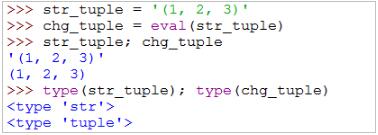如何调用tensorflow训练完的模型# 导入必要的库
import os # 用于文件和目录操作
import ast # 用于解析字符串形式的Python数据结构
import numpy as np # 用于数值计算
import tensorflow as tf # 深度学习框架
import matplotlib # 用于数据可视化
# 强制设置后端为'Agg'(非交互式,适合服务器环境保存图片)
matplotlib.use('Agg')
import sklearn # 导入机器学习工具库
# 强制使用CPU,禁用GPU加速(如果需要GPU加速可移除这些代码)
os.environ["CUDA_VISIBLE_DEVICES"] = "-1" # 设置环境变量,指定不可用的GPU设备
tf.config.set_visible_devices([], "GPU") # 显式设置不可用的GPU设备
# 关键修改:禁用分布式检测(适用于TensorFlow 2.19.0版本)
import tensorflow.python.keras.engine.data_adapter as data_adapter # 导入数据适配器模块
def is_distributed_dataset_patch(ds):
return False # 强制返回非分布式数据集,解决某些版本的兼容性问题
data_adapter._is_distributed_dataset = is_distributed_dataset_patch # 替换原有函数
# 从Keras导入模型和层相关组件
from keras.models import Sequential # 导入顺序模型
from keras.layers import Dense, Dropout # 导入全连接层和Dropout层
from keras.callbacks import EarlyStopping # 导入早停回调函数
from sklearn.model_selection import train_test_split # 导入数据划分函数
from sklearn.preprocessing import StandardScaler # 导入数据标准化工具
import matplotlib.pyplot as plt # 导入绘图模块
# 设置中文字体,确保中文能正常显示
plt.rcParams["font.family"] = ["SimHei"] # 使用黑体
plt.rcParams["axes.unicode_minus"] = False # 正确显示负号
# 数据处理函数定义
def process_data(file_path):
"""处理单个数据文件,提取前19列和最后一列"""
with open(file_path, 'r', encoding='utf-8') as file:
file_content = file.read() # 读取文件内容
file_content = ''.join(file_content.split('\n')) # 移除换行符
file_content = file_content.replace(' ', '') # 移除多余空格
try:
data = ast.literal_eval(file_content) # 解析字符串为Python数据结构
except Exception as e:
print(f"解析数据时出错 ({file_path}): {e}") # 打印错误信息
return None, None # 解析失败返回None
first_19_columns = [] # 存储前19列数据
last_column = [] # 存储最后一列数据
for row in data:
first_19 = row[:19] # 提取前19个元素
first_19_columns.append(first_19) # 添加到列表
last = row[-1] # 提取最后一个元素
last_column.append(last) # 添加到列表
first_19_array = np.array(first_19_columns) # 转换为NumPy数组
last_column_array = np.array(last_column) # 转换为NumPy数组
return first_19_array, last_column_array # 返回处理后的数据
def process_multiple_files(file_paths):
"""处理多个数据文件,合并所有文件的数据"""
all_first_19 = [] # 存储所有文件的前19列数据
all_last_col = [] # 存储所有文件的最后一列数据
for file_path in file_paths:
first_19, last_col = process_data(file_path) # 处理单个文件
if first_19 is not None and last_col is not None:
print(f"成功处理文件: {file_path}") # 打印成功信息
all_first_19.append(first_19) # 添加到列表
all_last_col.append(last_col) # 添加到列表
if all_first_19:
# 垂直堆叠数组(合并行)和水平堆叠数组(合并列)
combined_first_19 = np.vstack(all_first_19)
combined_last_col = np.hstack(all_last_col)
return combined_first_19, combined_last_col # 返回合并后的数据
else:
print("没有成功处理任何文件") # 打印错误信息
return None, None # 没有成功处理任何文件返回None
def get_txt_files_in_directory(directory):
"""获取指定目录下的所有txt文件路径"""
if not os.path.exists(directory):
print(f"错误:目录 {directory} 不存在") # 打印错误信息
return [] # 目录不存在返回空列表
# 生成目录下所有txt文件的完整路径
return [os.path.join(directory, f) for f in os.listdir(directory)
if f.endswith('.txt') and os.path.isfile(os.path.join(directory, f))]
# 模型构建函数
def build_neural_network(input_dim):
"""构建神经网络模型"""
model = Sequential([ # 创建顺序模型
Dense(128, activation='relu', input_shape=(input_dim,)), # 输入层和第一个隐藏层
Dropout(0.2), # 防止过拟合的Dropout层,随机丢弃20%的神经元
Dense(64, activation='relu'), # 第二个隐藏层
Dropout(0.2), # 防止过拟合的Dropout层
Dense(32, activation='relu'), # 第三个隐藏层
Dense(1) # 输出层,单个神经元用于回归预测
])
model.compile( # 编译模型
optimizer='adam', # 使用Adam优化器
loss='mse', # 均方误差损失函数,适合回归问题
metrics=['mae'] # 平均绝对误差,评估预测准确性
)
return model # 返回构建好的模型
# 主函数,程序入口
def main():
# 自动获取目录下的所有txt文件
directory = r"D:\4_python_code\02_BP神经网络" # 设置数据目录路径
file_paths = get_txt_files_in_directory(directory) # 获取所有txt文件路径
if not file_paths:
print(f"在目录 {directory} 中未找到txt文件") # 打印错误信息
return # 没有找到文件则退出
# 处理多个文件并获取合并数据
X, y = process_multiple_files(file_paths) # 处理数据
if X is None or y is None:
print("没有可用的数据进行训练") # 打印错误信息
return # 没有可用数据则退出
print(f"合并后的数据形状 - 输入: {X.shape}, 输出: {y.shape}") # 打印数据形状
# 数据预处理 - 标准化输入特征
scaler = StandardScaler() # 创建标准化器
X_scaled = scaler.fit_transform(X) # 拟合数据并转换
# 划分训练集和测试集 (80% 训练, 20% 测试)
X_train, X_test, y_train, y_test = train_test_split(
X_scaled, y, test_size=0.2, random_state=42 # 随机种子确保结果可复现
)
print(f"训练集形状: {X_train.shape}, {y_train.shape}") # 打印训练集形状
print(f"测试集形状: {X_test.shape}, {y_test.shape}") # 打印测试集形状
# 构建神经网络模型
model = build_neural_network(X.shape[1]) # 构建模型
model.summary() # 打印模型结构摘要
# 早停策略 - 防止过拟合
early_stopping = EarlyStopping(
monitor='val_loss', # 监控验证损失
patience=10, # 连续10轮没有改善则停止
restore_best_weights=True # 恢复最佳权重
)
# 训练模型
history = model.fit(
X_train, y_train, # 训练数据
epochs=100, # 最大训练轮次
batch_size=32, # 批次大小
validation_split=0.2, # 划分20%的训练数据作为验证集
callbacks=[early_stopping], # 早停回调
verbose=1 # 训练过程显示模式
)
# 评估模型
evaluation = model.evaluate(X_test, y_test) # 在测试集上评估模型
print(f"\n测试集评估 - 损失: {evaluation[0]}, MAE: {evaluation[1]}") # 打印评估结果
# 预测测试集
y_pred = model.predict(X_test).flatten() # 对测试集进行预测并展平结果
# 绘制训练过程(确保后端已设置)
plt.figure(figsize=(12, 4)) # 创建绘图窗口
plt.subplot(1, 2, 1) # 创建第一个子图
plt.plot(history.history['loss'], label='训练损失') # 绘制训练损失
plt.plot(history.history['val_loss'], label='验证损失') # 绘制验证损失
plt.title('模型损失') # 设置标题
plt.xlabel('训练轮次') # 设置x轴标签
plt.ylabel('损失') # 设置y轴标签
plt.legend() # 显示图例
plt.subplot(1, 2, 2) # 创建第二个子图
plt.scatter(y_test, y_pred, alpha=0.5) # 绘制预测值与实际值的散点图
plt.plot([y_test.min(), y_test.max()], [y_test.min(), y_test.max()], 'r--') # 绘制对角线
plt.title('预测值 vs 实际值') # 设置标题
plt.xlabel('实际值') # 设置x轴标签
plt.ylabel('预测值') # 设置y轴标签
plt.tight_layout() # 自动调整子图间距
# 保存图片(非交互式后端需要显式保存)
plt.savefig('training_results.png') # 保存训练结果图
# plt.show() # 非交互式后端不支持show(),如需显示可改用TkAgg后端
# 保存模型
model.save("neural_network_model.h5") # 保存模型到文件
print("模型已保存为 neural_network_model.h5") # 打印保存成功信息
print("训练结果图已保存为 training_results.png") # 打印保存成功信息
if __name__ == "__main__":
main() # 调用主函数,启动程序如何调用训练好的模型预测
最新发布





 被折叠的 条评论
为什么被折叠?
被折叠的 条评论
为什么被折叠?


